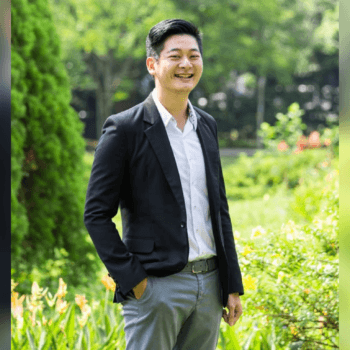With a unique background, Koki Tsubouchi lived abroad since his early childhood through to high school which could explain his unique ideas on product innovation and business creation. Koki was an entrepreneur by blood as he established a venture IT company when he was just still a student, with its primary business being web page development. Having graduated from University, Koki engaged in business activities and co-founded a consulting company. He would eventually serve as business manager in two other companies.
In 2013, Koki took a great leap in product innovation when his team and him invented and unveiled the world’s first scent device for smartphones. At its core, Koki aimed to integrate and bring scent into communication, inventing an entirely new form of communication that was non-existent before. Rightfully named Scentee, his device is attached to your smartphone which discharges scent through high technology.
Koki speaks to The Asian Entrepreneur today about this innovative product and tells us what motivated him to create this Scentee.
What exactly is Scentee?
The world’ s first scent-emmiting earphone jack accessory proposing new ways of enjoying your digital communication with scents. The form of communication using the sense of smell is something that has yet to be realized despite the ongoing evolution of smartphones.
Scentee Inc. has developed Scentee in order to construct a new form of communication for a mobile lifestyle using the sense of smell. By linking with an exclusive app, it will enable users to experience 4D communication using an interactive smartphone that incorporates smelling, in addition to seeing, speaking and listening.
Scentee consists of two parts, a body and a scent cartridge. It emits a scent by means of Scentee apps. Scentee is compatible with iOS and android based smartphones and tablets. It simply needs to be plugged into the earphone jack. Scentee can be used for various purposes, including games, alarms, SNS apps, and so on. A 7-colored LED on Scentee blinks when it gives off fragrances. You can set the colors in apps.
How did Scentee come about?
The idea for Scentee was born in May 2011. It was conceived by Masaru Tange, CEO of SHIFT inc., ChatPerf’s parent company, after a small chat with a employee who mentioned that it would be very innovative and interesting if mobile phones have a function related to scents.
From the technology of how, which Japan has traditionally been good at, to a vision for what to invent, Tange and his members, including Koki, Programmers, engineers and designers, got together to make the vision reality.
How do you see with the future of Scentee and its integration into society?
Although the smartphones we have seen so far have been a culmination of the world’s most cutting-edge technology, one of man’s five senses has not yet been utilized; his sense of smell. If we could exchange smells using smartphones, we could put more of our feelings into our formerly boring messages. Like the moment when a hint of a passer-by’s perfume reminds us of a previous lover, imagine how much of that feeling of attachment you could enjoy, by simply infusing your trusty smartphone with that scent.
The thought alone fills us with warmth .On a Japanese crowd funding site, “Campfire”,(http://www.campfire.co.jp), we reached the target amount in just four days, receiving much attention, and have so far received more than double the target amount. Just as the Japanese Walkman changed the world’s culture, one of our big goals is that Scentee change the world’s scent culture with the latest technology and ideas. It is the battle of an all-new venture corporation.
What is the current market reaction?
Not only people in Japan, but also in abroad,have gotten excited by Scentee.They say it is a very cool innovation. Always cool things come from Japan! With Scentee, we are driven to make you smile.
Connect
Website: http://www.scentee.com
Facebook: http://www.facebook.com/chatperf





























